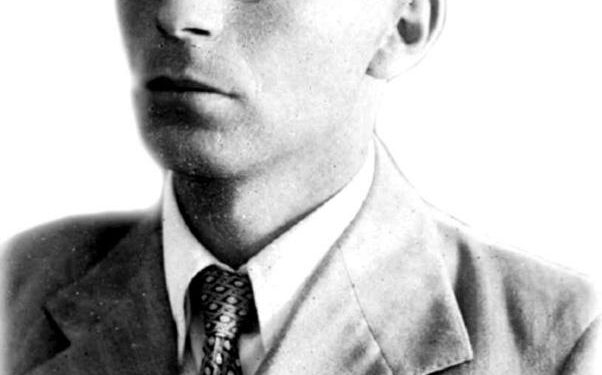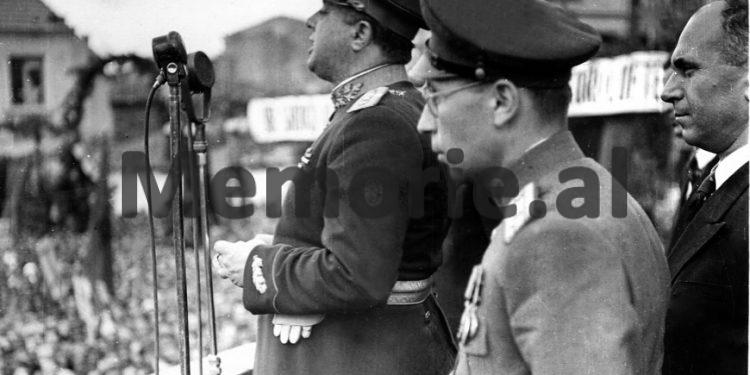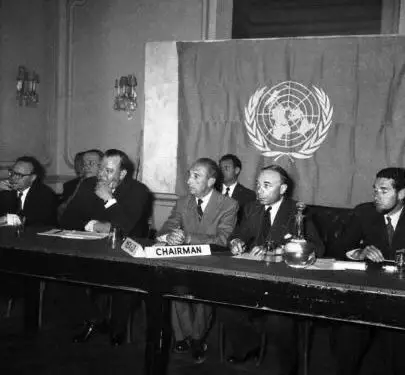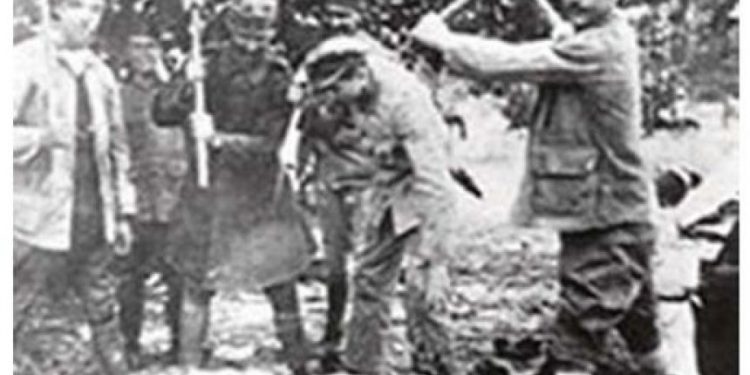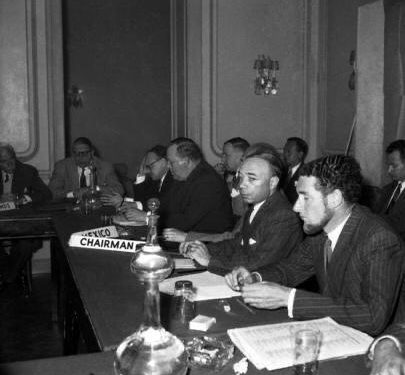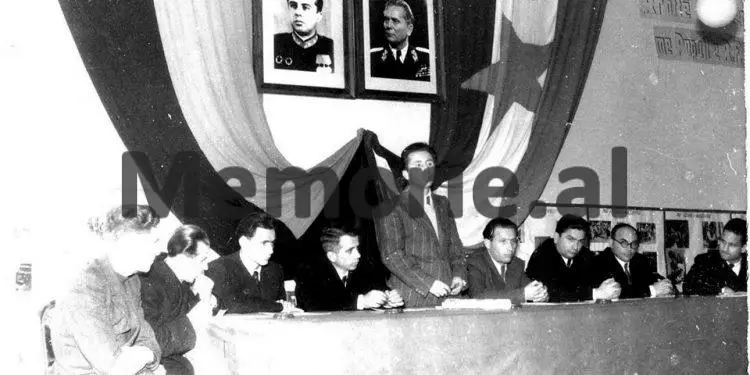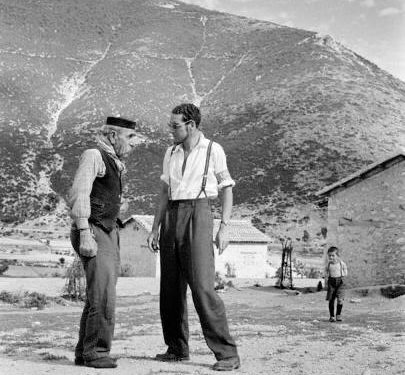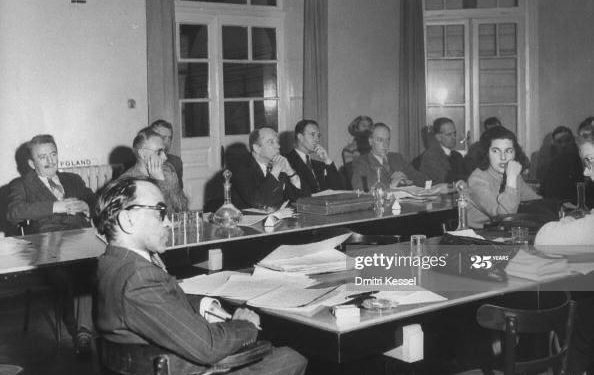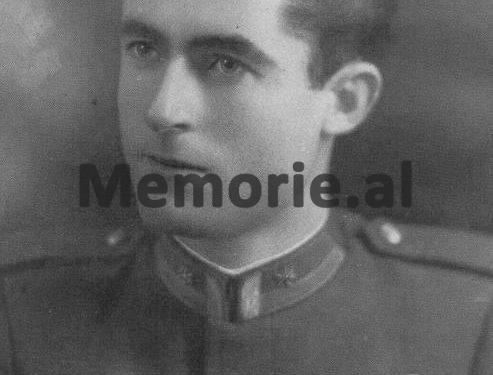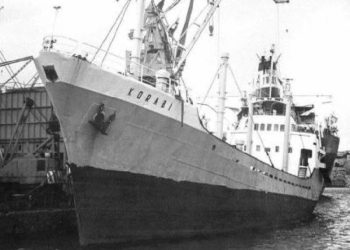Dashnor Kaloçi
Memorie.al publishes the unknown story of the Albanian delegation led by the First Deputy Minister of Internal Affairs, Colonel Nesti Kerenxhi who participated in the UNSKOB meetings that took place in 1947, to discuss the disputes that had between them the two Balkan countries. Rare testimonies of the former Deputy Minister of Internal Affairs (for Foreign Intelligence) in the years 1945-1948, Myftar Tare, who was part of that delegation which also included Colonel Kadri Hazbiu, Chief of Army Security, Vango Mitrojorgji, senior soldier of the Ministry of Interior and the writer Aleks Çaçi who accompanied the delegation as a journalist, regarding the clashes and conflicts with the Greek delegation, for the massacres committed by the gangs of the infamous general, Napolon Zerva, against the Cham Albanian population living in its own lands in Greece. How did the Albanian secret services of that time manage to snatch from the safe of the head of the British mission in Tirana, General Hodgson, the secret report of Colonel Palmer, which denounced in detail all the massacres of servile gangs against the Cham population in Greece?
Although six decades had passed since the distant year 1947, when he together with some of the highest officials of the Ministry of Interior and State Security, such as: Kadri Hazbiu, Nesti Kerenxhi and Vango Mitrojorgji, attended the meetings of UNSKOB (United Nations Committee on the Balkans) organized under the auspices of the United Nations in Athens, Thessaloniki, Ioannina, and several other Greek cities, denouncing the massacres of Greek service gangs against the Cham population, 86-year-old Myftar Tare had quite fresh all those events and everything that was said in those bilateral meetings that were also supervised by the Americans, the British, the Australians, the Italians, etc. His brilliant memoirs that would be envied not only by his few still-living peers, he was also helped by a notebook with yellowed sheets from the years, where he had accurately recorded everything his assignments required. incredibly delicate they had been charged at the time. Given all this, the former Deputy Minister of Internal Affairs in the years 1945-’48, one of the only former senior officials of the State Security of that period who spent over nine decades of his life, in the interview his exclusive that we are publishing below in this writing, did not find it at all difficult to talk to us, bringing in time events, dates, facts and previously unknown documents. He even recalled with unusual precision, regarding the tasks assigned by the Albanian government to that official delegation that went to Greece to denounce the crimes and massacres committed by the servile gangs against the Cham population and everything else that they faced in fulfillment. of their mission at the time.
Mr. Myftar, how do you remember the migrations of the Cham population to Albania after the massacres of the Greek service gangs in 1945?
The first migrations of the Cham population from their ethnic lands to Albania took place in August-September 1944, before the end of the war in Albania. At that time, in 1943-44, the infamous general Napoleon Zerva, who led and carried out the unprecedented genocide against the Albanian Muslim population of Chameria, had begun to cooperate openly with the German occupiers in Greece. As part of this close cooperation, which operated on the basis of a series of agreements signed by both parties, General Zerva and the German military forces began massacres of the Cham population, committing mass killings and burning entire villages. Remained at the mercy of fate and having no protection from the Greek government forces, the Cham population was forced to move from their centuries-old lands and leave for Albania and Turkey. Even a large part of the Cham population emigrated by motorboats and small boats to Italy, settling in the south of the Apennine Peninsula. This mass exodus of the autochthonous Cham population of Greece took place at the end of 1944 and the beginning of ’45, a time when I was serving as deputy commissioner of the Gjirokastra Division, where I had the opportunity to see them. with my own eyes, all the Chams who came to the southern borders of Albania
The displacement of the Cham population towards Albania, which was massive in the beginning?
As I said above, from September of ’44 until the end of that year, initially they came in groups, but then they came en masse with hundreds and thousands of people. The total number of the Cham population that came to Albania, reached up to 26 thousand people and this is with accurate statistics, accepted by foreign diplomatic missions that were then accredited in our country.
What measures did the Albanian government of that time take for their housing and where were they settled?
It must be said and this is a well-known fact, that with the arrival of the first groups of the Cham population towards the Albanian territory, ie from the end of 1944 and the beginning of 1945, the Albanian government of the then Prime Minister Enver Hoxha, took immediate measures by engaging with all the possibilities he had to come to their aid. The first Chams who came, some of them took refuge with relatives they had in Konispol, Saranda, Delvina, etc., while the rest who had no relatives in those cities and provinces of Southern Albania, with the help and funds of the government, was transported and sheltered in other cities deeper in the country, such as: Vlora, Fier, Elbasan, Cërrik Rrogozhinë, Kavaja, Durrës, Tirana, and up to the city of Shkodra. Most of them were housed in wooden tents and barracks which were also set up with the help of UNRRA, which at that time was present in our country and played a very big role in their shelter, clothing and nutrition.
Apart from the measures taken by the Albanian government of that time for the reception and shelter of the Cham population in our country, did it raise its voice in the international arena for the massacres of the service gangs against them?
As a start I wanted to say that since 1944, when the infamous gangs of General Napoleon Zerva continued the massacres, killings, burning of villages and mass expulsions of Chams from their lands, an English colonel named Palmer, was in the territory of Chameria, recorded everything that happened there. After that he drafted a complete and detailed report on the Greek massacres against the Cham population, describing in detail all that he had seen with his own eyes in the province of Chameria. Colonel Palmer sent a copy of this report to his government in London, while another copy was sent to the head of the British Mission in Albania, General Hodgson, who had his headquarters in Tirana.
You said that in that report, Colonel Palmer, had described in detail all the massacres of Greek servile gangs against the Cham population, how did you know this, when he did not send any copy of that report to the Albanian government ?!
Although Colonel Palmer did not give the Albanian government any copies of his report, we were able to obtain the only copy of the report he had made for General Hodgson in Tirana. That became possible at the end of 1945, when through our man, (XH.Ç, then a well-known general of the Ministry of Internal Affairs), who served near the British diplomatic mission in Tirana, we arrived to obtain from General Hodgson’s vault the copy of that report which would later serve us for use in many international meetings and meetings abroad where we denounced the massacres committed by the servile gangs against the Cham population.
More specifically, what did you do with Colonel Palmer’s report?
Following the demonstrations made by the Albanian government in the international arena to raise awareness of the Cham issue and their protection, it sent an official delegation to Greece to attend the UNSKOB meeting, which would conduct its work in several Balkan countries, where I was a member of that delegation. This meeting was organized and held under the direct patronage of the United Nations, which was committed to resolving the many disputes that the Balkan countries had between them. In this meeting where besides the official delegations of some Balkan countries such as: Albania, Yugoslavia, Greece, Romania, Bulgaria, official representatives of the USA, Britain, Australia, Italy, Poland, etc. also participated.
Who were the other members of that official Albanian delegation that attended that meeting?
The head of the official Albanian delegation that participated in all the meetings held in the framework of UNSKOB, was the first Deputy Minister of Internal Affairs, Nesti Kerenxhi, who must be said to be quite intellectually prepared and possessed some foreign languages. Nesti graduated from the French Lyceum in Korça and spoke French quite well. While as members of the delegation, besides me, were also Colonel Kadri Hazbiu, who at that time held the position of Chief of Army Security and Vango Mitrojorgji, with a high position in the Ministry of Internal Affairs. The journalist and writer Aleks Çaçi, who knew the Greek language quite well, also participated in that delegation with us. Although Nesti Kerenxhi was the head of our delegation, most of the work there fell on me, as at that time I was Deputy Minister of Internal Affairs for Intelligence, ie for our State Security bodies operating outside Albania.
Who gave you the instructions for the position that your delegation should take at the UNSKOB meeting?
All the instructions for our appearance there and the line we would follow, were received by Nesti Kerenxhi from Enver Hoxha in Tirana.
What about the Yugoslavs who, as it is known at that time, were present in Tirana, did you have connections and coordination of affairs before your departure for Greece?
Not only did we have very close ties, but as it were, we were a single delegation with the Yugoslavs, who as head of the delegation had their ambassador in Tirana, Josip Gjergja, who was originally from the Albanians of Zadar, Dalmatia.
Where did you meet the Yugoslav delegation?
We met with the Yugoslavs in Skopje where we first went and after we joined them, with their vehicles we traveled towards Greece.
Where did the first meeting originally take place and do you remember it?
The first meeting took place in Thessaloniki and then it moved to Athens. From those first two meetings, our delegation, through Nesti Kerenji, raised as two main issues: the provocations of the Greek government forces (which at that time we considered monarcho-fascists), on our southern borders and the shelter that The Greek government had made political fugitives from Albania, where many key exponents such as: former Prime Minister Koço Kota, General Prenk Pervizi, Colonel Hysni Dema, Colonel Muharrem Bajraktari, former Prime Minister Fiqri Dine, etc., were held in several camps of the Hellenic state . We considered them “war criminals” and asked the Greek government to extradite them to Albania to be held accountable before the people’s courts.
What if you did not raise the Cham issue in these meetings?
The Cham issue was one of our main points and it was raised by us in the meeting that UNSKOB held in Ioannina, which held its work there from 17 to 20 March 1947. Through Nesti Kerenxh we presented the copy of the original report that English Colonel Palmer had made to his government in London. After the presentation of that report, the Greek delegation was stunned as they were unaware that it was available to us.
But apart from Colonel Palmer’s report, did you have any other documents and evidence of the Greek massacres against the Cham population to present at that meeting?
At the meeting in Ioannina, we presented many other documents and evidence that we could obtain through our people who acted illegally in Greece since the end of the war, but also from many Greek citizens who helped us of their own free will. We also presented there many statements and testimonies taken from the Albanian Muslim population of Chameria, showing the genocide and the unprecedented massacres committed by the servile gangs against that defenseless Albanian population that was forced to leave their homes by force.
What was the reaction of the Greeks and other delegations to that meeting after Palmer’s report and other evidence you presented?
The Greeks were stunned and did not accept as true what Palmer had written about the massacres of servile gangs against the Cham population of Greece, while the British and Americans were silent and did not speak at all about everything they heard there. But it must be said that their position at that meeting was in unison with the Greek government. This came after the breakdown of Albania’s diplomatic relations with Britain and the United States, and also because of the anti-Western policy pursued by the communist government of Tirana at the time.
How long did the work of that meeting last?
That meeting continued for about a month in a row in that spirit, with accusations and counter-accusations between us and the Greek side. After a month, at our request the meeting was moved to Thessaloniki, and then at the request of the Greek side, the meeting was moved to the city of Korça. The Greek side insisted that the meeting take place in Korça, as it hoped to find an Albanian in that city who testified in their favor. But during the two days of their stay in Korça, they failed to find any Albanians who would prove that in the territory of our country, the riots of the civil war that was taking place in Greece between the Greek government forces that we call monarcho-fascists were being prepared and incited and the Greek communist forces of General Markos Vafjadis who at that time controlled 1/3 of the territory of Greece.
But after Korça, where did the UNSKOB meeting continue?
After Korça the meeting moved back to Ioannina and from there at our request, we went to Filat and Igoumenitsa, where we saw with our own eyes entire villages that had been burned and destroyed by the infamous gangs of General Napolon Zerva. In many villages there was not a single Albanian left, as they were forced to leave to escape the certain death that awaited them. After Filati, where all the mosques were burned and razed, we went to the village of Skorca, which was completely burned and destroyed. We showed it to the members of the Greek delegation who could not speak a word in front of those who saw there, as well as to the other delegations who accompanied us. Then, together with the other delegations, we went to the town of Konispol, where we found many men, women, and elders of the Cham population, who gave us detailed evidence of the massacres committed by the Greek servile gangs against them. There was also a woman from Adem Klefti’s Cham Muslim family, who pulled out and showed us a skull of her little 8-year-old son, who had been massacred by Greek servile gangs. This caused great irritation to other delegations, who did not speak because they were against us, due to the anti-American policy pursued by the communist government of Tirana. After Konispol we returned again to Filat and Ioannina and walked almost all over the province of Chameria where we found only 16 Albanian families, who had been put in the service of the Greeks and had converted to Orthodoxy. Those 16 families had come from Konica and occupied the homes of Cham Muslim Albanians in Filat. One of them was Mersin Haxhi from Trikrifa, who had been a close collaborator with the Germans, and in order to escape punishment from the Greeks, he spoke and testified against us in Filat.
But apart from Mersin Haxhit, was there any other Albanian who was put in the service of the Greeks to speak and testify against the Albanians?
Apart from some of the main exponents of the ranks of Albanian political fugitives held in Greek camps, who spoke and testified against the savage and violent policy pursued by the communist regime of Enver Hoxha in Tirana, there were some other Albanians who forced and coerced by the Greeks, he agreed to speak out against us. In Thessaloniki, for example, a former police officer from the village of Bozhigrad in Korça, named Mehmet Karafili, testified against us, who, after being demobilized as an effective of the Ministry of Interior in Tirana, had gone to his village. of the east and from there he had fled to Greece. He testified about the aid and preparations given by the communist government of Tirana to the Greek communists of General Marko Vafjadhis. But this, which in fact was completely true, damaged our work in defense of the Cham cause, for which we had gone to Greece, and gave material to the Greek side to attack us.
What was the end result of those meetings and what was achieved there?
All our claims, ie of the official Albanian delegation that were raised against the Greek side at the UNSKOB meeting (along with the claims of other Balkan states that had disagreements between them), went to Switzerland, where as a representative of the official Albanian delegation , only Nesti Kerenxhi participated. In Switzerland the Cham issue took off, as our claims were substantiated and based on indisputable facts. All the documentation that had been submitted to Switzerland was then sent to the UN offices in New York, where the problems dragged on and never took the path we had hoped and claimed. As I said a little above, all this came because of the anti-Western policy pursued by the communist regime in Tirana, from which the Cham issue was damaged and remained unresolved until the end.
The life and vicissitudes of the former Deputy Minister of Interior, Myftar Tare
Myftar Tare was born in 1921 in the village of Starje in Kolonja, where his family originally came from, one of the most famous in that province, where its ancestors were educated in Greece and Turkey. In the late ’30s, Myftari attended classes as a boarder in the “Normal” school in Elbasan, where he came in contact with communist ideas. On April 7, 1939, he was one of the main organizers of the normalist students who went and took up arms in the barracks of Krasta, in order to fight against the Italians in the city of Durres. After the completion of “Noramle” of Elbasan, he returned to his hometown where he became active with the Anti-Fascist Movement as one of the main leaders of the Albanian Communist Party for the Kolonjë area. The end of the war in 1944 found Myftari with the rank of major and in 1945 he was appointed deputy commissioner of the Division in Gjirokastra. After serving for some time in that position, in 1945 he was called to Tirana and appointed to the position of Deputy Minister of Internal Affairs for Intelligence (Directorate of State Security operating outside Albania), where he was also given the rank of colonel. As part of that task, in 1946, Myftari accompanied Enver Hoxha on his trip to the Paris Peace Conference. Also in 1946, in the function of his duty, Myftar Tares was assigned the task of leading “Operation 10”, which had to do with the illegal assistance that the communist government of Tirana provided to the Greek Communist Party and the armed forces of General Markos Vafjadhis, who were fighting against Greek government forces. From 1946 to 1948, Myftari coordinated all aid in armaments, clothing, food, etc., which came to Albania through Eastern European countries, sending them illegally to the Greek communists, as well as housing and escorting all senior officials of the Greek Communist Party who took refuge in Tirana and several other cities in Albania. In 1948, when Enver Hoxha attacked the “Koçi Xoxe Group”, Myftari was detained for some time by the State Security, accusing him of having sent Koci Xoxe to physically eliminate Enver Hoxha during his trip to the Conference of Peace in Paris. But he could only escape the intervention of Enver Hoxha, who said that he had chosen Myftari himself and had not given him to Koci Xoxe. After that, although the new Minister of Interior, Mehmet Shehu, asked Myftari to return to the Security, he refused and left the ranks of the Ministry of Interior, serving in civilian duties until he retired./Memorie. al




